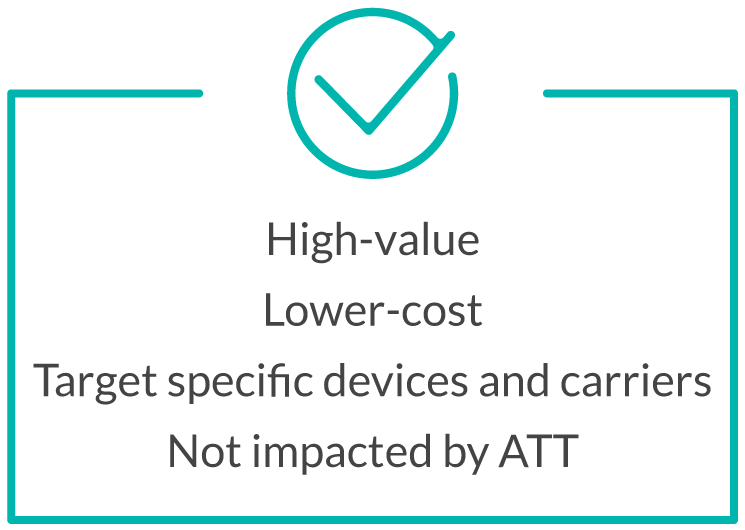Subscribe to our newsletter and get the latest resources sent to your inbox.

The Mobile Marketer’s Guide to OEM Placements
9 MIN READMobile user acquisition (UA) comes in many forms. Most marketers envision someone clicking on an ad that takes them to an app store to initiate a download — but some channels turn that dynamic on its head. Yes, we’re talking about original equipment manufacturer (OEM) placements — sometimes referred to as preloads — which put your app directly on a user’s device.
In this article, we explore the world of OEM as it pertains to mobile app marketing, one of the most popular options that we offer to our clients.
What is OEM?
Within the context of mobile ads, OEM refers to a network with a direct partnership with device manufacturers and/or cellular carriers such as Samsung, Sprint, Verizon, or AT&T. These companies monetize their inventory via new device activations, push notifications, widgets, and more. Generally only available on Android devices, advertisers can use these placements to reach users with specific phone models and on select cellular networks.
There are three categories of OEM categories, beginning with the manufacturers themselves. Then some ecosystems act as intermediaries between manufacturers and advertisers. Finally, there are advertising platforms that integrate with supply-side platforms (SSPs) to purchase traffic from manufacturers.
Pros and cons of OEM
Like every supply type, OEM has strengths and weaknesses. On the pro side, OEM placements allow advertisers to reach potential customers at multiple touchpoints throughout the life of the device. The relationship often begins at onboarding as users enter valuable information that can be used for targeting — giving advertisers the ability to suggest their app or provide messaging based on user demographics. UA marketers can also place ads strategically at different touchpoints to find new customer segments all along their journey. This UX often feels native and value-driven, resulting in a long-lasting relationship with the user.
It’s also worth noting that OEM offers advertisers a high-value but lower-cost approach to targeting. However, OEM is typically only available on Android devices, making it a poor fit for advertisers focused on iOS growth.


Tips for being successful with OEM
While OEM placements can benefit several verticals, from gaming to FinTech, FeedMob has found that this supply works well for targeting users who fit specific demographic niches. It also lets advertisers get hyperlocal, which benefits brands looking to move into new markets.
We also like OEM for clients looking to drive down funnel activities. While OEM carriers typically sell inventory on a cost-per-preload basis, FeedMob can absorb this cost, charging our client on a cost-per-install only if a user opens the app. FeedMob has found that OEM placements drive more sign-ups and higher conversions. In one case study, our client’s conversion rate went from 4.45% to 9.05% and had an outstanding 6.5% CVR which boosted the overall conversion rate. On top of all of this, OEM drove a more efficient CPI.
With the right strategy, OEM can drive significant growth and let app marketers hit their key KPIs. Want to learn about how OEM can be part of your media mix? Contact FeedMob today.
Posted: February 6, 2024
Category: FeedMob News and Updates, Mobile Insights Blog, Mobile Performance Strategies
Tags:

